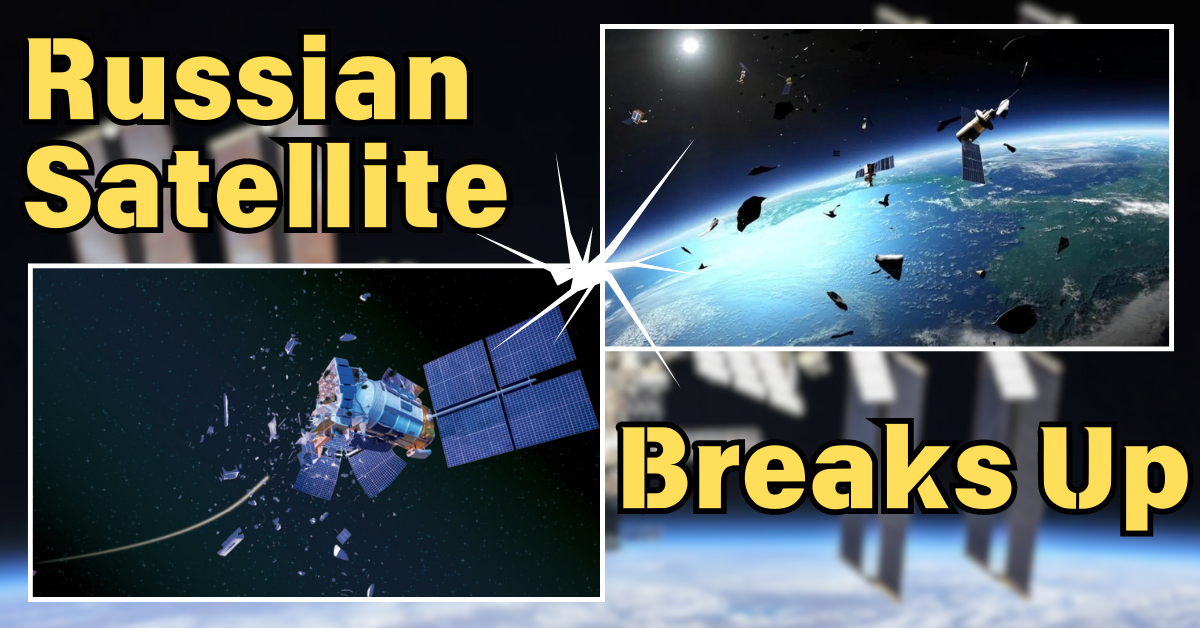Russian Satellite Breaks Up, Creating Debris Cloud and Forcing ISS Astronauts to Shelter
A non-operational Russian satellite has fragmented into over 100 pieces of debris in orbit, raising concerns about growing space junk and prompting astronauts on the International Space Station to seek shelter for about an hour.
Russian Satellite Breaks Up Near International Space Station
The defunct satellite, RESURS-P1, a Russian Earth observation satellite declared non-operational in 2022, broke apart on Wednesday around 10 a.m. Mountain Time (1600 GMT), according to U.S. Space Command.
The breakup occurred close to the International Space Station, forcing NASA to have the U.S. astronauts on board take refuge in their spacecraft for about an hour.
Russian satellite breaks up, creating debris in low Earth orbit https://t.co/EcoGf96iFf pic.twitter.com/y7h8SIqp8n
— SpaceNews (@SpaceNews_Inc) June 27, 2024
Source: Twitter
Cause of Breakup Unknown
There are no immediate details on what caused the RESURS-P1 to break apart. U.S. Space Command is monitoring the debris cloud, but has stated there is no immediate danger to other satellites.
The fragmentation of the satellite generated "over 100 pieces of trackable debris," according to U.S. space agencies.
Debris Cloud Threatens Operational Satellites
Events that produce large amounts of debris in orbit are concerning as space fills with satellite networks essential for modern life.
The breakup of the Russian satellite occurred at an altitude of approximately 355 km (220 miles) in low-Earth orbit, a densely populated region that includes SpaceX's Starlink network and China's space station.
Concerns About Kessler Effect
The roughly 25,000 pieces of debris larger than four inches (10 cm) in space, resulting from satellite explosions or collisions, have raised concerns about the potential for a Kessler effect.
This phenomenon involves collisions between satellites and debris, leading to a cascading effect that generates more hazardous space junk and significantly increases the risk of further collisions.
Russia Previously Criticized for Anti-Satellite Missile Test
In 2021, Russia faced criticism from the U.S. and other Western nations after it destroyed one of its defunct satellites with a ground-based anti-satellite (ASAT) missile test. This test resulted in thousands of pieces of space debris.
While the RESURS-P1 passed over several locations during its breakup, there is no evidence to suggest Russia used a missile to target the satellite. Experts speculate that the breakup was more likely due to an internal issue with the satellite.
Decommissioned Satellite on Path for Re-Entry
Decommissioned satellites typically face two fates: they either remain in orbit until they gradually descend into Earth's atmosphere for a fiery reentry or are maneuvered into a "graveyard orbit" to minimize the risk of collision with operational satellites.
Roscosmos, the Russian space agency, decommissioned the RESURS-P1 satellite in 2021 due to onboard equipment failures and it had been gradually lowering its orbit since then.
Astronauts on ISS Seek Shelter
On Wednesday evening, NASA mission control in Houston alerted the six U.S. astronauts aboard the International Space Station to implement "safe haven" procedures.
The astronauts each moved to the spacecraft they arrived in, ready for a possible emergency evacuation. After about an hour, the astronauts emerged from their respective spacecraft and resumed their usual activities on the station.
Read more such news on techinsighttoday
Thank you so much for reading.

